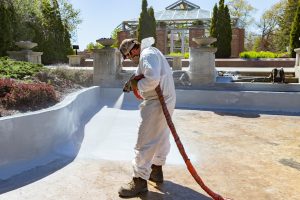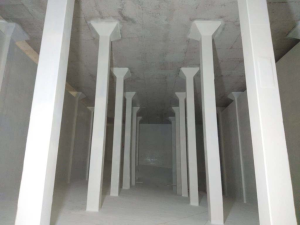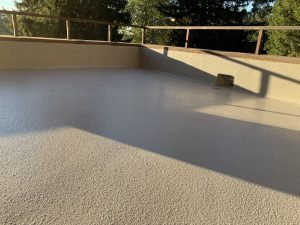
Investment in infrastructure is a hot issue throughout this part of the United States. During his presidential campaign candidate, Trump said he would unveil an ambitious infrastructure bill within the first hundred days as president but nothing has been implemented so far. The plan was initially put forward that included $137 billion in federal tax credits for private companies that invest in transportation projects. This, Trump said would bring about an investment of $1 trillion over the next 10 years. Senate Democrats oppose the plan, and in January, they released the Senate’s individual “blueprint” of infrastructure expenditures that call for trillions of dollars in funding for schools, transportation, “energy infrastructure,” as well as sewer and water systems over the next 10 years, however, it does not contain tax credit for builders.
There is definitely an urgent need to focus on the subject. The infrastructure of the United States is aging and badly in need of repair or sometimes complete replacement. It is evident that the United States falls far behind other countries in the maintenance of its infrastructure. In 2013 the American Society of Civil Engineers awarded America an overall score of D+ based on its physical condition and need for investment to make improvements. Diverse sectors also received their own grades according to their capacities, state of repair of funding, the future demand for operation and maintenance, and public safety, as well as the ability to adapt, and creativity. Solid waste was awarded the highest rating (B-) as did infrastructure that is associated with levees and the inland waterways each received the grade of D-. It is good to know that none of these was considered to be in a state of failure although the majority of them were graded poorly, with only a few classified as good or mediocre.
The wastewater industry was awarded the grade of D. It’s not unusual considering that a lot of the country’s wastewater as well as sewer system is 50 to 100 years old and needs to be renovated to continue to be functional for the increasing population, according to Jim Osborn, president of Osborn Contract Services Inc. is a South Carolina-based accredited applicator in the field of spray-applied coatings for rehabilitation as well as other products.
The environmental conditions within municipalities’ wastewater treatment plant, sewers, and vaults is extremely acidic. The infrastructure is exposed to constant chemical exposure and severe abrasion which deteriorate concrete and corroded steel within clarifiers containment pits and anaerobic digesters manholes, tanks along with other facilities. This results in the formation of significant cracks through which wastewater could be able to escape (exfiltration) or get into to the sewer system (infiltration) According to Osborn. Leaks cracks, cracks, and damages to existing coating systems are not the only ones on the list of issues in the maintenance of facilities and building of new structures, they could cause serious penalties if municipal or facilities for industrial use are found to be in contravention of EPA consent decrees issued by the courts,” he adds. This could mean the withholding of federal tax funds until the issue is addressed.
One option that has proven useful for wastewater rehabilitation is the use of advanced polyurea coatings and liners. “Polyurea systems offer durable and flexible abrasion and chemical-resistant waterproofing, which not only bridge cracks that are already present but also can extend up 400 percent without cracking. Since they cure and set quickly and can be utilized and installed at various temperatures, they can also reduce the time it takes for a facility to shut down,” asserts Osborne. They’re a step up from conventional cementitious materials that are destroyed by the hydrogen sulfide gas and epoxies that have limited elongation capabilities, and therefore are unable to successfully bridge cracks, says Osborne. Polyurethanes also have more elongation than epoxy, but they fall short of the properties of polyureas.
For concrete repairs of wastewater infrastructure, from municipal manholes and lift stations to clarifiers trenches, and sumps Osborn has switched to a more advanced polyurea system developed by ArmorThane which is a producer of spray-applied protective coatings and waterproof membranes for the U.S. wastewater and industrial markets. The coating creates a seamless waterproof and durable protective liner which stops leaks and increases the durability of the whole structure in addition to the necessary elongation (up to 400 percent), crack bridging, hardness, as well as tensile strength properties essential to create an industrially strong liner that safeguards, strengthens and protects and waterproofs concrete water infrastructures, as per Osborne. “Since it is the case that the polyurea system is superior in length, it can bridge cracks that can be as high as one-eighth. Furthermore, although tensile strength is greater than other materials it also has less permeability, which makes it more suitable for waterproofing. Additionally, its impact, abrasion, and chemical resistance are also outstanding which means it can withstand hydrogen sulfide.” He says. In the end unlike cementitious coatings which need to be replaced every couple of years it is the polyurea coating typically lasts for years.
The polyurea coating is also able to set and cures rapidly, which reduces wastewater treatment facilities or infrastructure downtime. This could translate into thousands of dollars every hour of savings and avoid long periods of interruption to service according to Osborne. Furthermore, unlike traditional repair methods, it is able to be applied polyurea coating is able to be applied at temperatures that range from -40degF to +350degF. It is built to withstand freeze-thaw cycles and broad variations in humidity and temperature. Additionally, the polyurea coating can reduce the need for continuous maintenance of clarifiers. “Typically clarifier maintenance teams have to employ high-pressure power washers for hours to remove solid waste off concrete areas,” says Jennifer Hoop who is director of Conco Spray Solutions, an Indianapolis Indiana-based company that specializes in the repair as well as protection in municipal facilities, including storm, potable and water systems. “Since the polyurea offers waterproofing and an easily cleaned surface, maintenance crews can easily hose through the clarifier and clean it. This will reduce the frequency of cleaning of the clarifier every week by two-thirds.”
As with other coatings but it is crucial to remember that correct crack reparation and surface prep is vital. If done properly when done correctly, it is possible to apply the polyurea coating could be applied directly on concrete as well as similar materials to form a thin film. In the event that surface and/or crack repair is not feasible Pre-spraying polyurea onto geotextile fabric panels set above the on-site substrate could be a viable alternative. The edges of the panels are joined by a second layer of polyurea.
For the rehabilitation of wastewater, polyurea is a superior coating for any application which requires crack-bridging, long-term chemical and heat resistance and quick turnaround time,” concludes Hoop.







